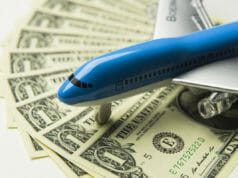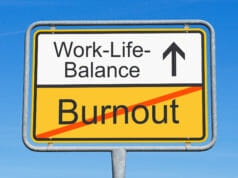People will often talk about upgrade time and how long it should be from when a pilot starts working at a company and when they will upgrade to be a Captain at that company. Since Part 121 Pilot-In-Command time is usually a critical requirement to be hired at a major carrier, this is usually one of the things that most pilots tend to consider when choosing an airline. Even at the major level it can have a large impact on quality of life and total earning potential.
However, while upgrade time is an important part of choosing an airline, it is important to understand how it is calculated, and what some of the main factors are that affect it. This allows a prospective pilot to somewhat objectively evaluate how current upgrade times may affect them.
The first thing that is important to understand is that “upgrade time” is based on the latest person to upgrade, or the most junior pilot who is sitting in the left seat. If it took that pilot 4 years to be able to hold a Captain position, then that airline is said to have a 4-year upgrade. Consequently, if airline B’s most junior Captain was hired 10 years ago, they are said to have a 10-year upgrade. This calculation is pretty straightforward. However, there are many variables that can affect an upgrade time for an incoming new hire that might not be accurately represented in the current upgrade time.

The main factor that will influence upgrade time is the need of the company. This is always the primary driver of upgrades. As a general rule of thumb, when one pilot moves on, another is upgraded in their place and then a new-hire First Officer is hired to fill the vacancies at the bottom of the list (all of the other First Officers move up in seniority too). If a company is adding planes they are likely to be running shorter upgrades in order to staff the new flying (a good rule of thumb to help estimate the need for pilots is 10 Captains and First Officers per airplane). If the airline has high attrition, they may be running shorter upgrades even though they might not be adding airplanes. This can have a very large effect on the net upgrade time for a new First Officer, which may not be predicted by the current upgrade time. As an example, if Airline A is adding 50 new airplanes, and a pilot is hired at the bottom of the list with 49 of the 50 new airplanes in service, the likelihood that the new FO will see the same upgrade time that the most junior Captain did is unlikely, since the flow of upgrades will slow significantly once the new flying is adequately staffed. That leaves attrition from the Captain’s seat as the primary driver of upgrade time, which will probably not move the list forward as quickly as the addition of new flying and the attrition combined. Consequently, if Airline B is seeing very high attrition, but is not adding new flying, that may serve to decrease the upgrade time significantly in a very short span of time.
Another important factor affecting upgrade time is the reality that pilots are usually hired in batches. Since the hiring usually occurs as flying is gained, and aircraft are usually delivered in batches over a relatively short period of time, this can have a tremendous impact on how upgrade times are presented. As an example, assume that Airline A has not seen any new aircraft deliveries in 10 years. In this scenario, it is likely that most of the hiring since the original flying was staffed was only to cover attrition. Depending on how attrition occurred, the company may have sporadic hiring over the years, resulting in groups spread far apart. In the case of Airline A, assume that 150 pilots were hired in 2009 and then no hiring occurred again until 2014. If the most junior Captain hired at Airline A was hired in 2009, then the airline would be said to have a 6 year upgrade time. However, if there are only 15 pilots from 2010 below that Captain, and the airline runs an upgrade class of 20 people (the 15 pilots left from 2009 plus 5 from 2014), then the upgrade time drops from 6 years to 1 year instantly the moment that first 2014 pilot is upgraded. Essentially, this means that what held as the average upgrade time previously does not necessarily hold for new hires. Usually, an airline will discuss or advertise the current upgrade time because the future upgrade time is not known with any absolute certainty. As an alternate example, if Airline B has been adding a lot of flying, but the last airplane deliveries are occurring, they may have something on the order of a 1-2 year upgrade time, even though that won’t hold true in the future simply due the realities of reduced staffing needs since no new airframes are being delivered beyond the current aircraft. It is also important to understand that most airlines cycle between periods of growth and periods of no growth.
A new factor in the industry is the looming reality of massive age related retirements at the majors that will probably serve to change the upgrade dynamics at virtually every airline currently in the industry.
The final factor that can greatly affect upgrade time are basic industry cycles. It is safe to say that September 11, 2001 was an event that nobody predicted and its affects on the industry average upgrade time were catastrophic. It was the norm just prior to that for the upgrade time to be forecast at 5 years or less (in some cases, 2 years or less was the norm), even though 9-11 would make that reality very remote. In some cases, due to the industry downturn, some pilots are still sitting reserve as a First Officer when the forecast said those pilots should be Captains with 5-10 years of seniority in the left seat. This scenario affected airlines at all levels of the industry, as well as corporate aviation. Of course, these cycles also include normal economic and business cycle influences in addition to geo-political influences.
It is important to understand and consider the upgrade time at a particular carrier, but pilots should be diligent to weigh the forecast or current upgrade time against the past hiring patterns, attrition, current upgrade numbers, aircraft deliveries and aircraft retirements. It is important for prospective pilots to understand that unknown variations in upgrade time should be factored into the total evaluation of an airline’s suitability as well as other quality of life issues.





























































































































